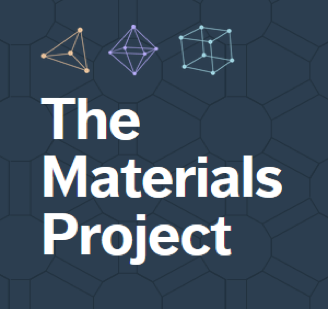
 Figure: Substitution map, showing how likely an element is to be substituted for another in an inorganic structure and yield a stable compound [6].
Figure: Substitution map, showing how likely an element is to be substituted for another in an inorganic structure and yield a stable compound [6].
The development of new functional materials remains, despite the rapid pace of modern materials science, a laborious and painfully slow process. The fact that currently, it takes an average of 15 to 20 years for a successful material to move from the laboratory to the market speaks to the fundamental difficulty of traditional materials discovery and property characterization. Our goal, within the Materials Project and our high-throughput computation efforts, is to fundamentally change how this process works, moving from isolated insight and serendipity to the systematic prediction and characterization of novel materials.
To this end, we are pursuing two tightly linked research directions – (1) the automated, quantum mechanical characterization of known and new materials and their properties, which we term ‘high-throughput computing’, and (2) the prediction of new materials and properties through data mining. These two methods have already been applied to the discovery of new materials for Li-ion batteries, photocatalysts, thermoelectrics, piezoelectrics, and other functional materials. We are actively engaged in both the development of data mining and high-throughput methodologies and the application of these techniques to a range of physical problems and materials discovery.
Select Publications:
- A. Jain, K. Persson, G. Ceder, Research Update: The materials genome initiative: Data sharing and the impact of collaborative ab initio databases, APL MATERIALS 4, 053102 (2016), http://scitation.aip.org/content/aip/journal/aplmater/4/5/10.1063/1.4944683.
- A. Jain, S.P. Ong, G. Hautier, W. Chen, W.D. Richards, S. Dacek, S. Cholia, D. Gunter, D. Skinner, G. Ceder, K. Persson, Commentary: The Materials Project: A Materials Genome Approach to Accelerating Materials Innovation, APL Materials 1, 011002, 1-11 (2013).
- G. Ceder, and K. Persson. How supercomputers will yield a golden age of materials science, Scientific American, Dec (2013). http://www.scientificamerican.com/article/how-supercomputers-will-yield-a-golden-age-of-materials-science/.
- G. Ceder, Opportunities and challenges for first-principles materials design and applications to Li battery materials, MRS bulletin 35.09 (2010) .http://journals.cambridge.org/action/displayAbstract?fromPage=online&aid=7945213&fileId=S0883769400002852.
- C. Fischer, K. J. Tibbetts, D. Morgan and G. Ceder. Predicting crystal structure by merging data mining with quantum mechanics, Nature Materials, 5, (2006). http://www.nature.com/nmat/journal/v5/n8/full/nmat1691.html.
- G. Hautier, C. C. Fischer, A. Jain, T. Mueller and G. Ceder. Finding nature’s missing ternary oxide compounds using machine learning and density functional theory, Chemistry of Materials 22.12 (2010). http://pubs.acs.org/doi/abs/10.1021/cm100795d.
- L. Yang, S. Dacek, and G. Ceder. Proposed definition of crystal substructure and substructural similarity, Physical Review B 90.5 (2014). http://journals.aps.org/prb/abstract/10.1103/PhysRevB.90.054102.
